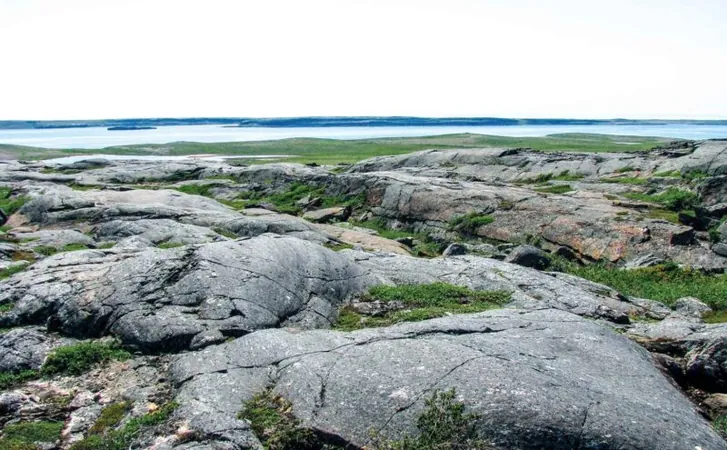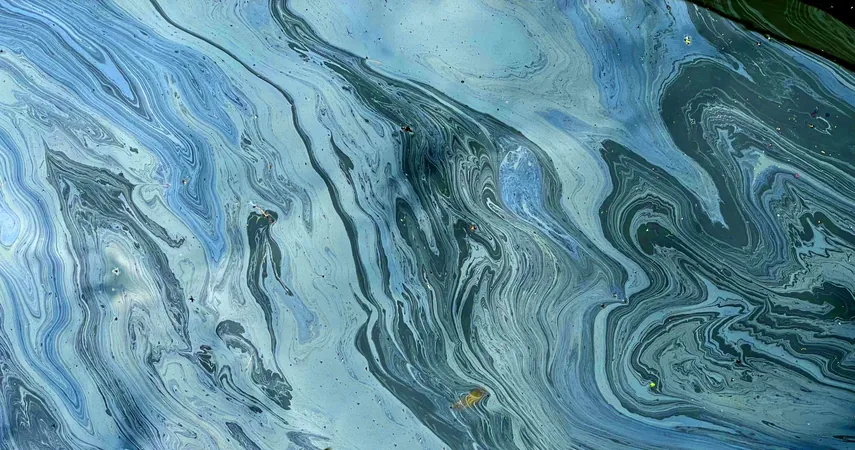
Unveiling Earth's Age: The Discovery of the World’s Oldest Rocks in Northern Canada
2025-07-06
Author: Arjun
A Geological Marvel Unearthed
In a remote area of northern Quebec, a groundbreaking discovery has revealed fragments of Earth's crust that date back over 4 billion years, making them the oldest known rocks on our planet. These ancient specimens hail from the Nuvvuagittuq Greenstone Belt (NGB), which has now gained international attention.
From Controversy to Confirmation
Geologist Jonathan O’Neil from the University of Ottawa was among the first to uncover these rocks in 2008. He proposed their age at 4.3 billion years, suggesting they formed just a short time after the Earth itself during the chaotic Hadean eon. However, skepticism arose as different studies, employing varied dating techniques, placed the rocks' age between 3.3 and 3.8 billion years.
After more than a decade of research, O’Neil has provided new insights. His latest study indicates that rocks formed from molten magma intruding existing layers may actually be around 4.16 billion years old. This discovery supports the claim that the surrounding volcanic rocks could be even older.
A Fiery Planetary Past
The formation of these rocks traces back to a time when the Earth was a turbulent sphere of molten lava, with surface temperatures soaring around 230°C — hot enough to bake pizzas! This period, dubbed the Hadean era, was crucial in shaping our planet's geology.
Initially, scientists believed that rock formation during this era was minimal. However, recent findings suggest otherwise, indicating that even amid the explosive volcanic activity, a solid crust began to emerge, hinting at the beginnings of life far earlier than previously thought.
Unlocking Secrets of Earth's Origins
O’Neil explains that these rocks provide a rare glimpse into Earth’s formative years, shedding light on how the first crust formed and the geodynamic processes at play. Additionally, some of the rocks have formed from ancient seawater, offering clues about the early composition of the oceans and the potential environments for life to arise.
Conservation Concerns
Discovering rocks so old is a rare achievement, as much of Earth's original crust has been recycled or eroded away. However, this significant find has raised concerns among the local Inuit community near Inukjuak. There is a growing apprehension regarding the environmental impact of further research, especially after past studies resulted in damage to the landscape.
Tommy Palliser of the Pituvik Landholding Corporation voiced the community's desires: "While we understand the fascination with these rocks, we want to prevent any further damage. We advocate for protective measures that allow research without invasive techniques."
A Glimpse into Our Planet's History
The NGB not only reveals the geological history of the Earth, but it also represents a captivating narrative about our planet's early environment. As specialists delve deeper into these ancient formations, we inch closer to understanding the origins and evolution of life on Earth.




 Brasil (PT)
Brasil (PT)
 Canada (EN)
Canada (EN)
 Chile (ES)
Chile (ES)
 Česko (CS)
Česko (CS)
 대한민국 (KO)
대한민국 (KO)
 España (ES)
España (ES)
 France (FR)
France (FR)
 Hong Kong (EN)
Hong Kong (EN)
 Italia (IT)
Italia (IT)
 日本 (JA)
日本 (JA)
 Magyarország (HU)
Magyarország (HU)
 Norge (NO)
Norge (NO)
 Polska (PL)
Polska (PL)
 Schweiz (DE)
Schweiz (DE)
 Singapore (EN)
Singapore (EN)
 Sverige (SV)
Sverige (SV)
 Suomi (FI)
Suomi (FI)
 Türkiye (TR)
Türkiye (TR)
 الإمارات العربية المتحدة (AR)
الإمارات العربية المتحدة (AR)